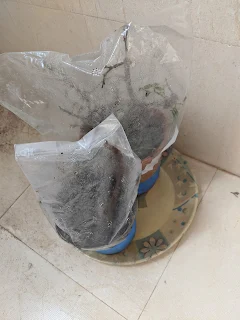Ficus Retusa Or Ficus Green Island Defoliation and Care
Spring and Autumn are best Seasons for plants growth, During this season plants will be active because of its favorable conditions of the weather lots of growth will be there. The movement water, nutrients and food inside the plant will be vigorous,the plant will be in active stage of developing new branches, leaves. Food preparation in the leaves that is photosynthesis will be adding energy to the plant in thickening of trunk line. During this period if we defoliate plant by removing all the leaves at nodal point there will be speedy new growth because of this weather.
In tropical countries defoliation can be done two times a year to reduce size of the leaves. Mostly deciduous plants sheds its leaves once in year. Defoliating means removing or cutting down the leaves of
Bonsai plant. It is a regular practice of Bonsai artists on their deciduous trees during the autumn season before spring. First we will see what are deciduous trees. Deciduous trees are usually Maple,oak mostly giant flowering trees around the region of equator. Most of these tropical plants they shed their leaves during Autumn season after their flowering season is over. Leaves of these plants are broad and the canopy of tree is round or umbrella shape. Ficus is tropical ever green tree with broad leaves. Ficus tree sheds their leaves to reduce the leaf foliage and evaporation of water during dry season to control water storage in the plant. As soon as monsoon returns new leaves starts developing.
Defoliation is a natural process in nature.
How to do Defoliation manually.
Always Leaf is attached to trunk with petiole. when leaf matures it changes its color to yellow because the leaf no more can prepare food for the plant. it can't do any photosynthesis activity. then slowly leaf detaches from trunk or stem and falls down. but when manually doing cutting a leaf from the stem we have to follow one procedure. Removing the
leaf with a sharp scissors leaving petiole on the stem. below it is explained with photos.
There are different ways of doing defoliation depending on the Plant growth and health.
1) Complete Defoliating of the plant
2) Partial outer canopy Defoliation POCD
3) One third leaf Defoliation
4) Removing only Big leaves Defoliation.
1) Complete Defoliating of the plant : Complete defoliation is removing all the leaves on the plant. Complete defoliation some times we will also do it before wiring the plant, so we can see the
branches of the plant clearly before pruning and ramification of the plant,
Below link shows how to do .
Photos One is before defoliation, second is after Defoliation
2) Partial outer canopy Defoliation POCD
In partial outer Canopy Defoliation means removing only limited outer canopy by keeping inside leaves intact.
Partial Outer Canopy Defoliation
3) One third leaf Defoliation
One third defoliation is shown below . Cut one third of leaf leaving behind one fourth of leaf. Cut all the leaves of the plant in same manner. One third defoliation we will to be done on a plant when the plant is young and the plant is not strong enough to take stress of complete defoliation.

 4) Removing only Big leaves Defoliation.
4) Removing only Big leaves Defoliation. Here we are not touching young small leaves of the plant, we are removing only big leaves of the plant and allowing small leaves to to stay on plant, this type of defoliation we will do on a planet when plant is not fully ready for complete defoliation and if it is effected with any pests.
 |
Before removing Big leaves
|
 |
After removing Big leaves
|
Defoliation on deciduous plants encourages the plant to get more energy with new leaves and ready for it thickening the trunk line by giving more branches. Defoliation is a natural phenomenon on deciduous plants. When we are doing defoliation on Bonsai plants we have to remember some points. Ficus plants responds well for defoliation. Some ficus plant produce fruits. During fruiting stage don't defoliate Bonsai. it may harm the plant. check the health of the plant and do it.
Complete Defoliating of the plant should not
1) Be done on freshly re potted plants.
2) When plant is infected with pests.
3) If the plant is weak without proper growth.
4) In hot summer months when temperature is above 35 degrees centigrade.
5) when the plant is young.
Care to be after Defoliation
1) Don't keep plant in full sunlight, keep it in semi shade.
2) Reduce watering after defoliation. Just keep the soil moist not wet.












































